Musharraf wanted PPP out in 2008: Khursheed Shah
Opposition Leader recalls interesting events after PPP came to power in 2008
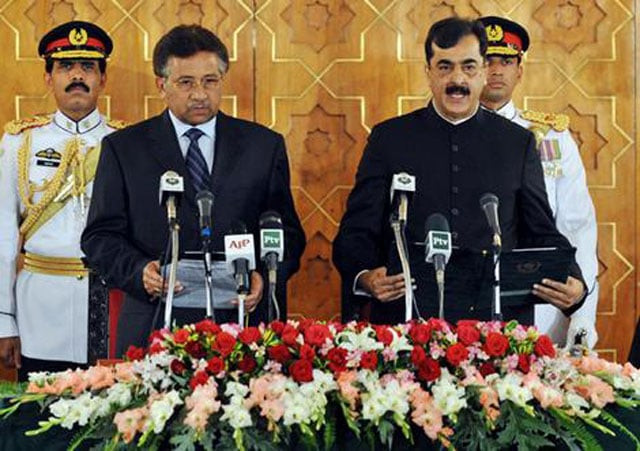
PHOTO: AFP
Except in Sindh, where the PPP emerged as a dominant force, no party was in a position to form a government of its own.
Safe exit for Musharraf: MP Dasti says witnessed deal between PPP, PML-N
In the elections – held just two months after the assassination of Benazir Bhutto – the PPP grabbed the highest number of seats in the National Assembly, but it was still short of forming a majority government.

Ultimately, the Asif Zardari-led PPP came to power and ruled the country for the next five years before it suffered an embarrassing rout in the 2013 general elections.
The Express Tribune interviewed Syed Khursheed Shah, the incumbent leader of opposition in the National Assembly who was among the insiders in the power corridors of the government after 2008 polls.
According to Shah, then president Musharraf wanted the PPP to make an alliance with the Chaudhry Shujaat-led PML-Q. The military ruler also offered his smaller allied parties, including members from FATA and JUI-F, to form a government in the Centre and Punjab. The condition was to keep PML-N out of the equation.
Musharraf’s former mediaman joins PPP
The PPP weighed its options and decided to go for the opposite, forming a coalition with the PML-N in the Centre and Punjab. The relationship, however, did not last long.
“Musharraf offered us the government in Punjab and to install our own chief minister,” Shah recalls. “He said he would give us the necessary numbers in the Centre and Punjab both. But do not take along the PML-N.”
Under Musharraf’s offer, the PML-Q was to support the PPP in Punjab. The PPP had won 110 provincial seats with the PML-Q grabbing 80 seats before disintegrating into several factions. In the Centre, the PML-Q had 55 votes, and with FATA’s 10 members and the JUI-F lawmakers, it could have given majority to the PPP. The MQM was also there on the backup.
“Musharraf thought if the PPP came to power with his support, he could remain in power and continue to call the shots,” Shah says. “He would have used his allied parties to keep us under pressure… by bringing in one party and taking out another from the coalition.”
The opposition leader believes working under a military general president would have brought a bad name to his party. “The PPP had a choice: either to sacrifice Punjab or revive the Constitution,” Shah says. “We considered all options. We thought if we make a general stronger now, he might give us Punjab. But you never know, if he kicks us out after six months or a year, we will be standing nowhere.” Giving the reasons for adding PML-N to the coalition and giving it the Punjab government, the former minister says with Musharraf as president, the PPP could not have amended the Constitution and gotten rid of Article 58-2B... a promise the PPP had made with the people.
But the coalition did not last long. The PML-N quit the Centre, protesting the PPP was not fulfilling its promise of restoring the then chief justice of Pakistan (CJP) Iftikhar Muhammad Chaudhry, who was deposed by Musharraf for a second time in November 2007.
A year on: Govt may shelve Musharraf's treason trial
Meanwhile, the PPP started its efforts to get rid of Musharraf. The PML-N was contacted to secure its support in case the general remained adamant and needed to be removed through impeachment.
Shah claims after getting the nod from Nawaz, the PPP sent a message to Musharraf asking him to step down. The message was conveyed through then national security adviser Maj Gen (retd) Mahmud Ali Durrani.
“Musharraf immediately contacted then chief justice Abdul Hameed Dogar, telling him he will use his powers under 58-2B, pack the assemblies and go for new elections,” the PPP leader said, recalling his conversations with Dogar. “He sought support from the CJP to indemnify the move.”
According to Shah, the CJP told Musharraf if he approved his move to dissolve the assemblies, the “masses would kill him” as he was already facing the public’s wrath for siding with him.
This stopped Musharraf from taking the ultimate step and the PPP started building pressure on him to quit.
Shah narrated an interesting meeting between Asif Zardari and Nawaz Sharif at Zardari House in Islamabad, where the two discussed options to impeach Musharraf. “The PML-N started showing its colours and laid down preconditions in exchange for supporting the PPP in case it went for impeachment,” he said.
“I don’t exactly remember everything but there were many conditions,” he says. “While the PPP chief agreed to everything [put forward by the PML-N], it was Raza Rabbani and I who protested.”
The PPP leader recalled another instance of Zardari outwitting Nawaz once the decision to remove Musharraf had been finalised. After their formal meeting was over, the PML-N chief talked about his desire to assume the presidential office.
“Nawaz said Zardari sb since there will be no [Article] 58-2B, the president’s office will be a minor post. ‘Why not give it to us?’ Nawaz said,” Shah said. “In his usual candid tone Zardari sb replied, ‘I know that and I present my services for this office most humbly’.” The answer from Zardari wrapped up the conversation.
Published in The Express Tribune, February 22nd, 2016.

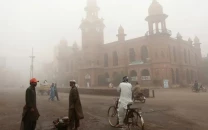

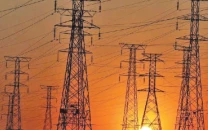

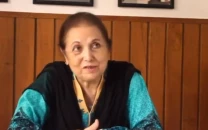
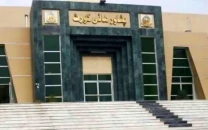












COMMENTS
Comments are moderated and generally will be posted if they are on-topic and not abusive.
For more information, please see our Comments FAQ